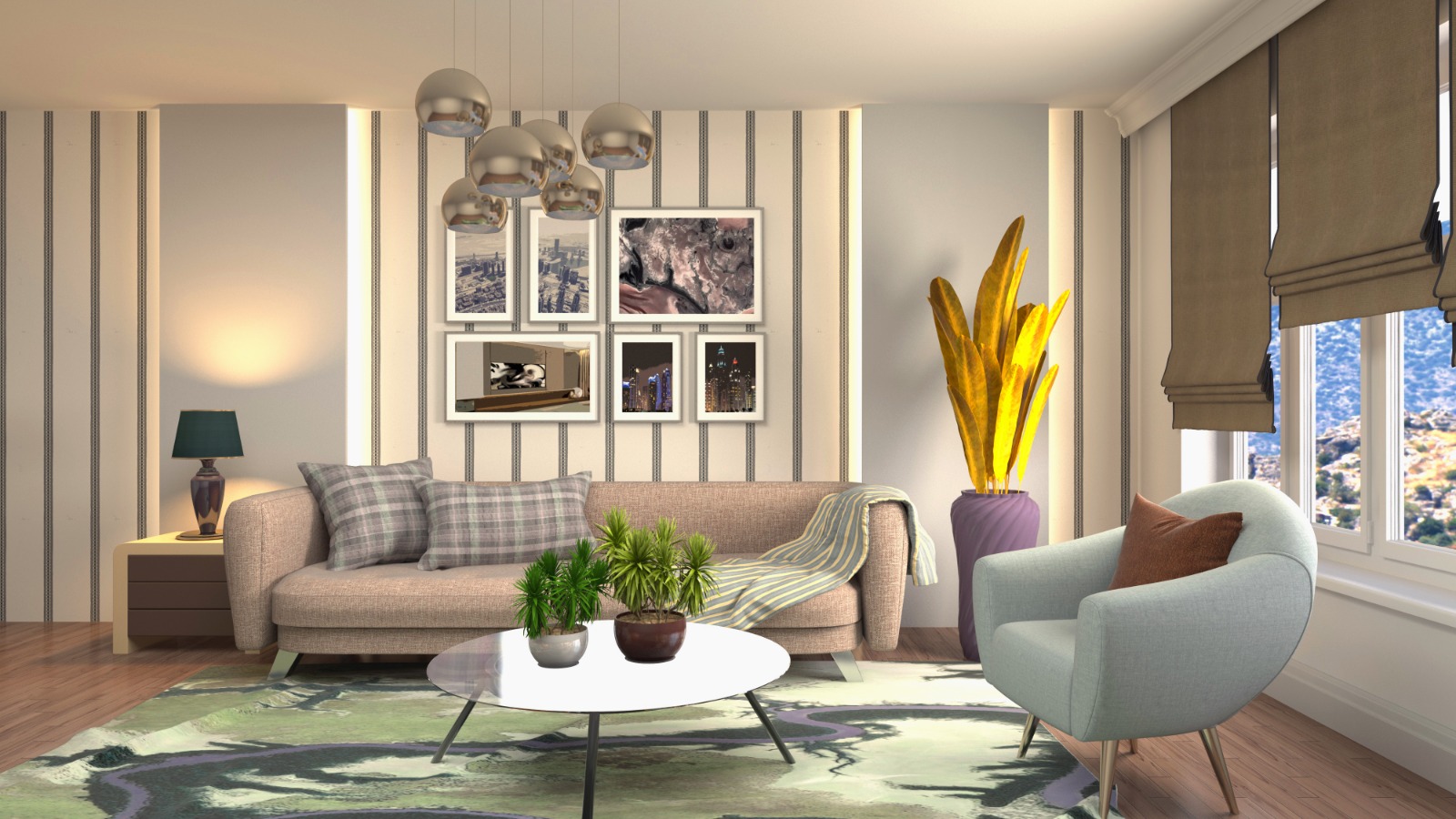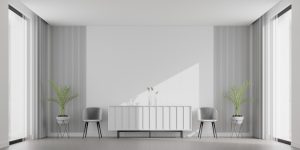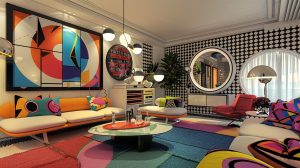


Interior designing is more than just designing spaces, it’s transforming them into an experience.. At pinnacle, we believe that an interior space should reflect the people who interact with it.Two of the most contrasting yet beautiful design philosophies are minimalism and maximalism, both of which play a role in shaping this experience. While one focuses on simplicity, the other embraces extravagance.
At Pinnacle, we adopt any philosophy as required by our clients, whether it’s the clean, simple aesthetics of minimalism or the bold, vibrant expression of maximalism. Ultimately, it’s about the impact we create, the experience we shape, and the satisfaction it brings.
But the discussion doesn’t end there. Why is there a question of minimalism vs. maximalism, and which style is right for you? Let’s dive into the core ideas.

Minimalist Interior Design
Minimalistic interior design is the art of less, inspired by the Japanese zen principle. It focuses on the concept of how less is more and gives all importance to functionality than excess. This design focuses more on clean lines, open spaces, and simplicity.
The core principles of minimalism include, less is more, focusing on owning less but with high functionality. Next is Essentialism focusing on incorporating elements that are absolutely essential and not just for aesthetics. Clean lines and open spaces incorporate more free space and create an aesthetic feel through simple elements, those that are often overlooked. Bringing in sustainability through conscious choices. Finally, practicing the art of elimination, disregarding and keeping only what truly matters and which are necessary.
Some of the key features of a minimalist design include neutrality in colors, often using white, beige, and muted tones. The furniture and other utilities are fewer, as the focus is on using fewer but multifunctional pieces, creating more space. For example, a convertible table or chair, and a convertible couch with multiple purposes are used. In minimalism, Functionality is key due to which hidden storage spaces and multipurpose usage dominate. To reduce excessive material use, naturality, and natural elements are utilized, like large windows for natural light, wood, stones, and other materials to create a serene atmosphere.
Minimalism, as a philosophy, is followed and integrated by those who seek calmness, organization, and mindful living. It is led by the desire to be simple and minimize consumption. There are variations in the reasons behind adopting minimalism. Some are idealistic minimalists, driven by a strong ideology, such as being environmentally conscious or vegan. Others are aesthetic minimalists, who choose to display less, creating spaces with minimal visual noise.
According to a study by Houzz, more than 60% of homeowners opt for minimalist designs as they feel that having too many things creates chaos. In order to maintain a clutter-free environment that brings peace, there has been a rise in minimalism, with a growing focus on mental health and well-being.The concepts of enjoying the little things and slow living are recent phenomena that have also contributed to this trend.

Maximalist Interior Design
Maximalism, as a philosophy, on the other hand, is all about the art layering, color, and creating a space of whimsy and bold personality. It’s a vibrant spectrum of self-expression. If minimalism is all about escaping chaos, maximalism dwells in creating a more structured and organized chaos. Elements like vibrant colors and décor come together to create visually dynamic spaces.
There is a heightened use of extravagant colors, patterns, shapes, textures, and accessories. The detailing given in interior designs is more intricate and highly detailed. The sustainability factor comes in through the preservation of art, history, and culture. Antiques and other statement pieces are incorporated to complete this idea of sustainability.
Maximalism thrives on grandeur, splurge, and extravagance. The color schemes thus have deeper, contrasting tones like jewel tones, deep hues, and bold palettes. There will be a use of textures and different patterns that create a whole experience. Finally, it’s all brought together by statement pieces and furniture that speak for themselves. It’s a complete outpouring of self-expression that results in designs worth telling a story.
Maximalism, like minimalism, is a form of ideology that people embrace, where they see everything in vibrant colors, with life itself as an expression, and they want this to extend into their homes or spaces. Vibrancy is an important element in maximalism, and as per human environmental psychology, a colorful and stimulating environment increases human creativity by 45%.
It’s for those who love to hoard, collect pieces from all around, tell stories of different contexts, and overall see life as art. Not just in homes, but maximalism can also be seen across studios, hotels, restaurants, and workspaces, all contributing to the aesthetics and experience one wants to create.

Choosing the right style
Choosing between minimalist and maximalist styles of design depends entirely on the experience you want to create with your space or the story you want to weave. A vision stems from aesthetic preferences, personality, and overall ambiance, shaping how one wants their space to feel.This makes both styles truly bespoke and unique, allowing you to determine how your space is best utilised.
More often, interior designers like us cater to a hybrid approach, combining these elegant styles and bringing the best of both worlds. Why settle for one when you can have it all?. Bringing the best of both, For example, a workspace can be designed to integrate different elements. It may have a very sleek and ergonomic working area with desks whereas a very extravagant lounge area , with layered designs ,vibrant colours and statement pieces to inspire creativity. This creates a striking balance driving work and interactions.
To sum it up, if you are someone looking to add colourful tones, intricate details, and multiple layers of design, then maximalism is your go-to. On the other hand, clean, open spaces, natural light utilisation, and a neutral or monochromatic colour palette define minimalism. If you are going for expressive and decorative, incorporating multiple elements for a similar purpose while enhancing aesthetics, then maximalism is the preference. Whereas, if you prioritise essentiality and multi-purpose design, where fewer elements serve multiple functions, then minimalism is the ideal choice. Otherwise, you simply can combine both, embracing the minimalist while at the same time allowing room to go all out.
Pinnacle Interiors Bespoke Approach
At Pinnacle Interiors, we provide bespoke solutions to our clients. We don’t just follow trends; rather, we tailor them as required.Our approach is not just about choosing one particular design philosophy rather we contribute to the minimalist vs. maximalist discourse by offering the best of both, as desired by our clients. Ultimately, it is their identity, aspirations, and functional needs that we focus on.
For those looking for minimalistic options, we curate serene environments and redefine their space accordingly.For the maximalists, we elevate spaces by bringing bold expressions to life, tailored to their vision. For those seeking balance, we incorporate the hybrid approach, blending the best elements of both while seamlessly crafting spaces tailored to their needs.
We understand and accept that trends keep changing, and that this highly evolving landscape thrives on optimizing and adapting. So we evolve along with it, pushing the boundaries of our craftsmanship.
If you are looking for expert guidance on how to style your space, our team is here to provide solutions for all your tastes, from simple to vibrant, we’ve got it covered. Get in touch with us today!